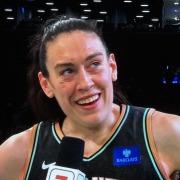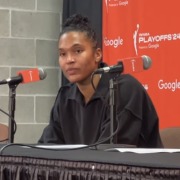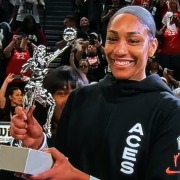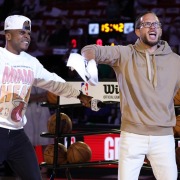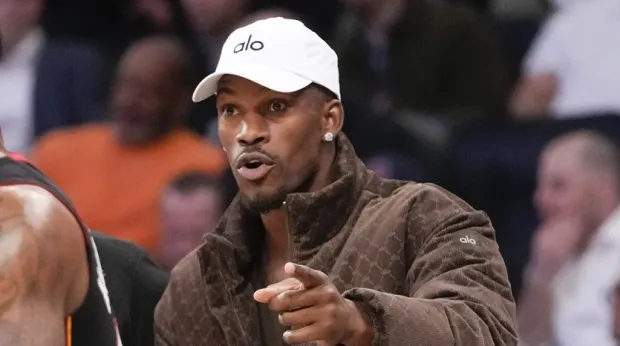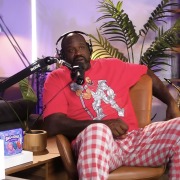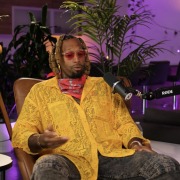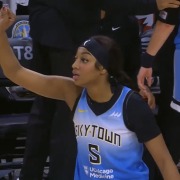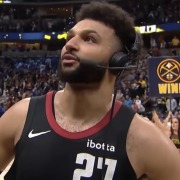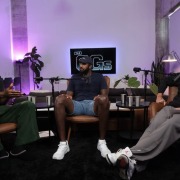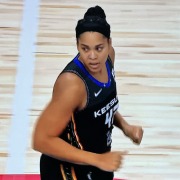The WNBA Playoffs commenced with a bang. All the home teams won. Napheesa Collier was the player of the day, notching 38 points on 11 of 19 attempts, with six rebounds and four assists. And A’Ja Wilson was handed her MVP trophy.
Keep in mind that the first round is a best-of-three series, so each loser is already at the cliff’s edge unless they retaliate.
Let’s review Sunday’s action.
Leonie Fiebich and Breanna Stewart led the Liberty over the Dream
The Liberty came out blasting. Sabrina Ionescu hit a floater through the middle, then a transition pull-up triple. Breanna Stuart connected on a deep shot at the top of the key. Then Leonie Fiebich swished a corner tray, forcing Atlanta to call a timeout as the Liberty led 13-4.
Fiebich and Ionescu canned another 3-pointer after the stoppage.
Defensively, they held the Dream to nine points through eight-and-a-half minutes, bothering passing lanes and covering the arc. But the hosts were outscored 7-2 to end the first frame in the last 94 seconds.
In the second quarter, Fiebich stole an inbound pass in Atlanta territory, instantly scored at the cup, and made a transition layup with contact fed by Jonquel Jones. The latter collected three dimes and four points. And Ionescu’s jumper successfully fell from mid to long range.
In this spurt, the Liberty’s concern was stopping Tina Charles and Naz Hillmon. They combined for six of 10 baskets in the interval.
The Liberty led 48-30 at halftime, had committed two fewer turnovers and were up four on the glass. Additionally, the squad had 16 paint points, seven on the break, 12 off turnovers, two via second chances and none from the bench.
The Dream had 18 interior points, seven in the open court, two on extra tries, five off turnovers and none from the reserves.
Subsequently, Rhyne Howard came out of the break, punishing the Liberty off the catch and bounce from the perimeter, middle and paint. But her efforts just kept the visitors on life support as the deficit was too vast.
Despite the Liberty shooting poorly in the third quarter, Stewie, Jones and Courtney Vandersloot supplied seven digits from the stripe. Additionally, the group defended well without fouling, allowing the Dream one trip to the line.
The fourth quarter started with the Liberty ahead 69-49. Atlanta’s coach, Tanisha Wright, conceded, benching her starters to close the game. Her reserve crew made seven of 16 shots, totaling 20 points.
After, the Liberty coasted until the buzzer, winning 83-69. Furthermore, the team collected 28 paint points, 11 on the break, nine via second chances, 18 off turnovers and six from the bench.
The Dream put up 38 interior marks, 14 in the open court, 10 on extra tries, 14 off turnovers and 22 from the reserves.
Game 2 is on Tuesday.
Sun burn the Fever
Stephanie White, the 2023 coach of the year, had a curve ball for Caitlin Clark and the Fever, starting the game with DeWanna Bonner checking CC instead of DiJonai Carrington. Through the first half, Bonner held her to zero of three makes and slowed down the fastbreak assault because of her length and speed. Alyssa Thomas, a mobile brick wall, got time on her, too, as the match went on.
In spite of Clark getting neutralized as a scorer, the Fever survived the half down eight points. They leaned on Aliyah Boston’s post moves plus jumper on pick and pop sets, and Mitchell provided relief buckets from deep, medium and short distances.
At halftime, the Sun was up 46-38, committing two fewer turnovers and with an edge on the glass of two. Bonner and Thomas were unforgiving. The former added 16 marks to her sharp defense, shooting up the perimeter and making a fastbreak layup. The latter dropped four jumpers, a putback, scored in the open court and set up Bonner and Carrington for four dimes without a turnover.
On top of that, the Sun had 30 paint points, 13 on the break, seven on extra tries, 11 off turnovers and 12 from the bench.
The Fever had 20 interior digits, two in the open court, seven on second chances, nine off turnovers and 11 from the reserves.
Clark registered one of nine shots, with four dimes, two rebounds and a steal.
In the third quarter, Marina Mabrey splashed three trays, and Carrington put up three baskets at the cup.
Clark, Mitchell and Boston converted eight of 17 attempts in the period, taking all but one of the shots. Yet the Fever were outscored by three.
The fourth quarter started with the Sun on top 68-57. Carrington’s chase-down block on Temi Fagbelnle in the first minute was the play of the game.
Then, the Sun took over. By that point, the production in the paint was comparable to a fighter cracking an opponent’s ribs with body shots.
The Sun won 93-69. They added 50 paint points, 18 in the open court, nine via second chances, 16 off turnovers and 41 from the bench. Mabrey’s 27 was the most off the bench in a Playoff game in WNBA history.
The Fever had 36 interior points, nine on the break, seven on extra tries, eight off turnovers and 15 from the reserves.
Game 2 is on Wednesday.
Minnesota Lynx avoid a meltdown
To start, Napheesa Collier was unsparing, scoring 13 first-quarter points on a drive-by, rim roll, putback, fadeaway and free throws. The ball movement also exposed the Mercury’s defense, capitalizing on open looks galore for Bridget Carleton, Kayla McBride, Courtney Williams and Alanna Smith.
The Lynx made 60% of attempts through 12 minutes and rattled off 14 straight points, too, against tight coverage and the zone. The host defense contested Brittney Griner closely and on time near the basket, and allowed zero easy fastbreak points.
Collier followed up in the second quarter, pouring in two 3-pointers and four freebies. She ended the first half with 23 points on seven of 11 looks, with five rebounds, two assists, one block and a turnover. The rest of her teammates made 13 of 27 shots in that span.
At halftime, the Lynx were ahead 56-42. The game’s largest lead came midway through the second quarter, ahead by 23.
Subsequently, the 3-point protection loosened up. Diana Taurasi, Natasha Cloud, Celeste Taylor and Sophie Cunningham drained seven of 12 deep looks.
Meanwhile, the Lynx offense entered a famine.
Cloud continued to light up defenders in the fourth quarter, zooming past them to the basket and nailing one left-side mid-range basket. She even took the lead for her team, going left by Natisha Hiedeman with two minutes left. Kahleah Copper added 10 points in the frame, too.
The Lynx countered with seven straight points- freebies from Collier, a layup from Myisha Hines-Allen and Carleton’s tray- to put the game out of reach.
The Lynx won 102-95. They recorded 36 paint points, 13 on the break, 13 via second chances, 12 off turnovers and 16 from the reserves.
The Mercury had 32 interior marks, 12 in the open court, 10 on extra tries, 17 off turnovers and seven from the reserves.
Game 2 is on Wednesday.
Aces handled the Storm in the second half
The visiting Seattle Storm were the nastier team through the first half. An advantage on the boards by 12, plus seven offensive rebounds that turned into nine second-chance points and six digits off turnovers, helped put the champs on their heels.
At halftime, the Category Five Storm led 42-38. Nneka Ogwumike had 13 points, Jordan Horston put up eight with no misses and Skylar Diggins-Smith amassed seven marks on eight attempts.
The defense on Kelsey Plum—locking and trailing well, trapping her, switching length on her by the hoop, and guarding tight on the dribble—held her scoreless on four attempts. MVP A’ja Wilson was also contained to one of eight buckets at short, mid, and long-range in the span by Ogwumike and Mercedes Russell.
Then the Aces came out dealing in the third quarter. Wilson went wild, pivoting through defenders in the lane, outrunning everyone on the break, attacking the basket on face-up plays and hitting a 3-pointer.
On defense, the Aces were slow to stop Diggins-Smith getting downhill. Gabby Williams’ jumper was on target, too.
Next, the Aces’ defense shut down the Storm in the fourth quarter, authorizing zero of 12 field goals. Ogwumike was held scoreless in the second half as well.
To boot, Tiffany Hayes contributed eight points off the bench in the second half on drives and cuts.
The Aces won 78-67. Additionally, the group had 40 paint points, 11 on the break, six on extra tries, 12 off turnovers and 27 from the bench.
The Storm had 30 interior marks, 11 in the open court, 14 via second chances, 10 off turnovers and 10 from the reserves.
—
For more info on the Miami Heat, subscribe to Off The Floor.
